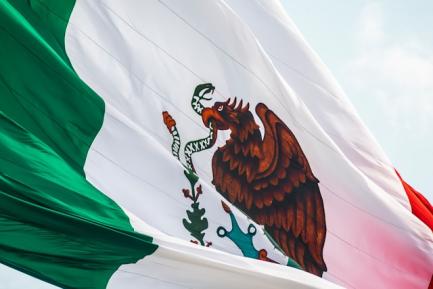
Mexico
The Mexican economy continues its recovery following the deep recession caused by COVID-19.
January 16th, 2023
Outlook
Forecast | |||||||||
Average | 2016 | 2017 | 2018 | 2019 | 2020 | 2021 | 2022 | 2023 | |
GDP growth (%) | -1.9 | 2.6 | 2.1 | 2.2 | -0.2 | -8.1 | 4.8 | 1.9 | 1.3 |
CPI inflation (%)* | 3.6 | 2.8 | 6.0 | 4.9 | 3.6 | 3.4 | 5.7 | 7.2 | 4.7 |
Fiscal balance (% of GDP) | -3.9 | -2.8 | -1.1 | -2.2 | -2.3 | -4.4 | -3.8 | -3.8 | -4.1 |
Public debt (% of GDP) | 46.6 | 56.7 | 54.0 | 53.6 | 53.3 | 60.1 | 57.6 | 56.8 | 58.7 |
Reference rate (%)* | 3.8 | 4.2 | 6.7 | 7.6 | 8.1 | 5.5 | 4.4 | 7.6 | 10.2 |
Exchange rate (MXN/USD)* | 13.5 | 18.7 | 18.9 | 19.2 | 19.3 | 21.5 | 20.3 | 20.2 | 20.8 |
Current balance (% of GDP) | -1.9 | -2.2 | -1.7 | -2.0 | -0.3 | 2.5 | -0.4 | -1.2 | -1.2 |
External debt (% of GDP) | 39.7 | 51.1 | 48.6 | 49.3 | 48.2 | 51.3 | 45.9 | 42.8 | 43.4 |
Note: * Annual average.
Source: CaixaBank Research, based on data from the INEGI and the IMF.
- The Mexican economy continues its recovery following the deep recession caused by COVID-19. GDP growth was 1.0% quarter-on-quarter in Q3 2022, making for four consecutive quarters of growth, and 4.6% year-on-year. The upturn in the economy was due mainly to: the improvement in private consumption, linked to the increase in real wages, the increase in tourism, and the dynamism of exports due to the economic strength of the US economy (despite the slump in the first half of the year). Economic activity was therefore close to pre-pandemic levels.
- The economic outlook in the short and medium term is less optimistic than for previous quarters. Advance data for October point to a slowdown in industrial growth and a loss of business confidence as the world economy heads into a period of slower growth. In the short term, the most potentially destabilising factors will be both internal and external. Internal factors include persistent exceptionally high inflation (standing at 8.4% year-on-year in October, the second-highest figure for 22 years) and the tightening of financial conditions. Banxico has raised interest rates to 10.00% in order to control inflation and keep the interest rate differential with the US within a range that does not weaken the Mexican peso exchange rate. Fiscal austerity and political uncertainty may also be discouraging the recovery of public and private fixed investment to pre-pandemic levels. External factors include the potential slowdown in the US economy (Mexico’s main trading partner) due to monetary tightening, and the effects of the Ukraine war on rising energy and food prices, without forgetting the obstacles still present in global supply chains. Given the situation, we estimate that GDP will limit growth to 1.3% in 2023, delaying the recovery of the economy to pre-pandemic levels until the end of 2023.
- Mexico is in a relatively more favourable position than is generally the case for emerging countries. However, the risks present in its economy are skewed to the downside. The main risks can be grouped as follows: (i) macroeconomic risk: Any recession in the advanced economies would place a burden on Mexico’s external demand and increase its current account deficit; moreover, persistent inflationary pressures would usher in yet further restrictive monetary policy; (ii) political risk: the current make-up of the Congress may cause delays in implementing relevant reforms in the tax and energy markets; and (iii) sovereign risk: any government bailout of Pemex would immediately increase the fiscal deficit and sovereign debt.


